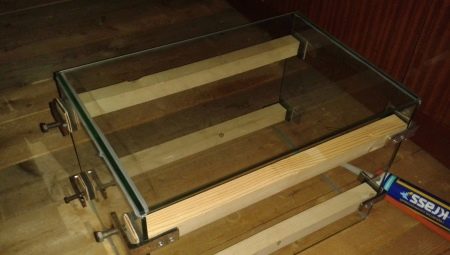Any owner of the aquarium may sooner or later encounter a breakdown or leakage of the tank. Having figured out in advance how to fix the situation, it will be possible to quickly eliminate the problem without unnecessary costs.

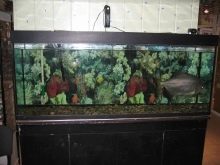

How to identify a problem?
Most of the trouble with the aquarium arises from joints that let it flow. This problem is easy to detect, but quite difficult to fix. The main causes of leakage are several.
- Often this happens due to poor degreasing of the vessel by the manufacturer. The result of this is an insufficient tightness of fit of the individual parts forming the joints and, accordingly, the inability to achieve the required level of tightness with the help of a silicone substance. Sometimes the fault is the non-compliance with technology in production, for example, insufficient glass thickness.
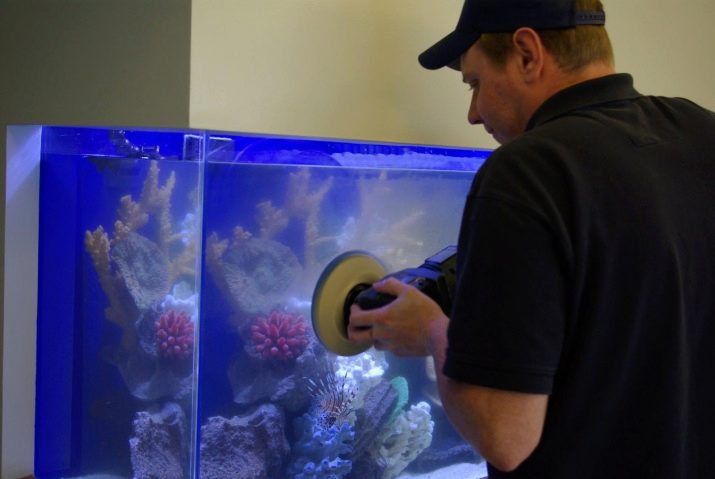
- Quite often, glass breaks. Such a problem is considered more complicated, since it is incredibly difficult to determine the place of a leak and eliminate it. The cause of the breakdown may be mechanical damage, frequent blows to the aquarium, or placing the tank next to a heater or simply in the wrong place. Sometimes chipping occurs when cleaning with the scraper is too intense. It will be possible to establish the place of invisible leakage with the help of an ordinary sheet of paper, or better, corrugated cardboard. This material absorbs moisture and when wet changes color to a darker one.
Just applying the sheet for 3-5 minutes to different walls, you can determine where moisture comes out of the aquarium.

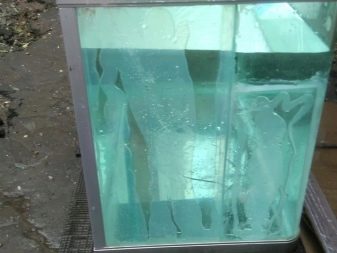
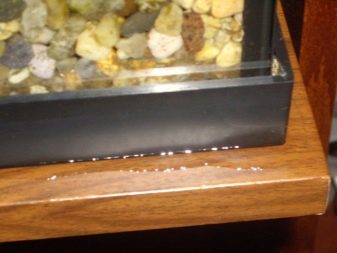
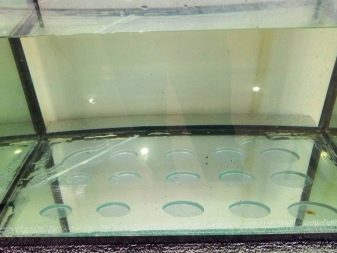
- Most often, a leak occurs at the side joints between the glasses. The next “popularity” place is the joint between the vertical walls and the bottom. Quite rarely, but nevertheless, a leak occurs in the corner where three glasses meet - bottom and two side.
The leakage between the two side windows in some cases does not even require a full drain of the liquid. It is enough to reduce the water level so that its surface is below the leak by 3-5 centimeters.
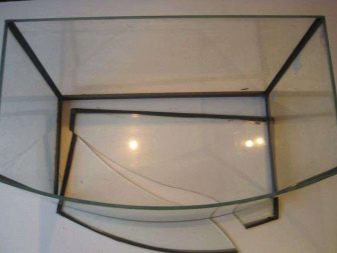
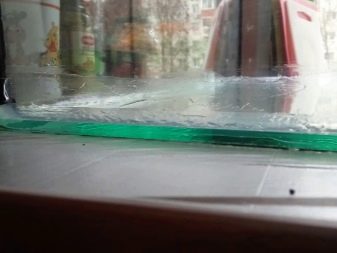
Major failures and their elimination
Repairing the aquarium with your own hands at home is not at all difficult. Recovery begins with emptying the aquarium, which will be described in detail below. Repair can only mean fixing the crack or a full replacement of the glass. In the first case, a high-quality sealant is needed, and in the second, the solvent used for degreasing, as well as the glass sheets themselves, cut in the required manner. Cut the blade with a glass cutter or a similar improvised tool. You can contact this issue in a specialized company.
Before fixing the leak, you also have to do the cleaning of the joints. The remains of the old sealant are removed with a blade, knife or other sharp tool. The choice of the latter is determined depending on the size of the gap. For example, for a gap of 1 to 3 millimeters, it will be sufficient to use a conventional razor blade. This step cannot be skipped, as the new sealant does not adhere well to the old.
Cleaned glass must always be degreased using ordinary acetone or medical alcohol. Next, a new silicone composition is applied using a thin brush.
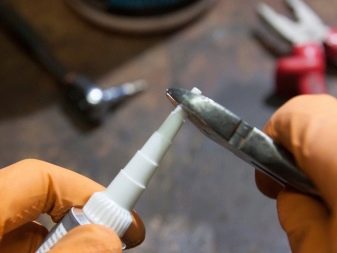
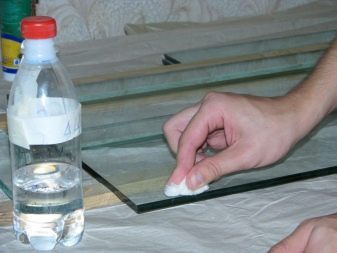
After approximately 24 hours, it is necessary to re-evaluate the condition of the seams with plain white paper. If there is still a leak, then you need to repeat the procedure. Next, you need to wait from 24 to 36 hours, until all toxic substances from the tank evaporate. After that, you can fill in the water in the aquarium, which is suitable for underwater inhabitants, to return to the place of soil, plants and the fish themselves.
In more serious cases, it is necessary to carry out a full replacement of glass covered with cracks. The cracked part can only be removed after cleaning and drying the entire tank. In the case when it comes to the frame structure, before removing the grooves, it will be necessary to eliminate the silicone or sealant used. The dismantling itself is carried out using a small knife or nail file.
The glue tank will need to be removed using a torch or similar tool. After removing the damaged glass, it is necessary to remove all adhesive residues from the edges of the aquarium. Scrapers, brushes or special solvents will help to cope with this task.
New glass should already be prepared by this moment.. All joints and ribs are treated with silicone sealant or other suitable substance with a non-toxic composition.
Having placed the canvas in the required place in the aquarium, it will have to be fixed with ropes or ribbons. Further, all joints are again worked out using sealant. Repeat this procedure more than three times. The updated aquarium will dry up to one and a half days.
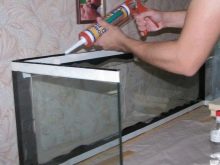
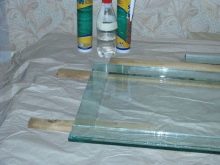
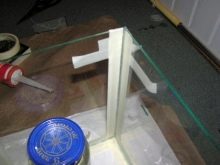
Its verification is carried out as follows: plain water is poured into the container for 2-3 hours, after which a check is carried out using corrugated cardboard. Further, the tank is freed from the test fluid and is filled with already settled water, suitable for the inhabitants of the aquarium.
In the event that the bottom is cracked, you can simply stick a new glass cloth over the damaged one. The crack itself is filled with silicone sealant before sizing. In addition, along the entire perimeter of the tank at the level of the new bottom, it will be necessary to form a glass strip, the width of which varies from 4 to 5 centimeters. It will not only protect against leakage, but will also strengthen the entire structure.In order to make the glass strip look organic, it can be decorated with a suitable material.
A full replacement of the bottom when it is damaged is not recommended, since this process is long and difficult. But you can put a regular patch on the crack. If the bottom seam leaks, then it will have to be re-glued.
First of all, there is a full cleaning of the old silicone, then sizing of the new one, after which the tank settles for a week. The next week is devoted to “soaking” - twice a day all the water in the tank is drained and re-poured. If no problems are found, then you can return the fish to their rightful habitat.
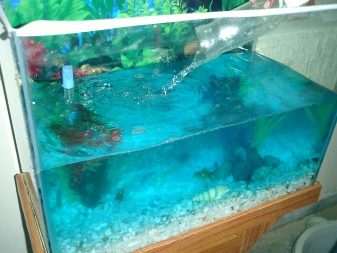

How to glue the aquarium?
A leaking reservoir must be repaired using special silicone glue sold in repair shops and some pet stores. The jelly-like substance becomes solid due to the interaction with moisture present in the air. In about half an hour, the mass will reach the desired consistency. If the aquarium drips along the seam, then with the help of silicone sealant it is possible to achieve the initial strength of the tank due to the presence of silicon in the composition of the substance.
When making a purchase, it is necessary to check the presence of the inscription "for an aquarium" or a silhouette of a fish on the package. Experts recommend paying attention to the Penosil, Soudal or Titan brands, which do not harm the underwater inhabitants, but are not afraid of constant exposure to water.
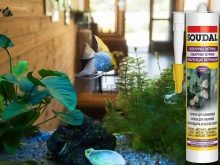


Recommendations of specialists
No less important than the repair of the aquarium itself is the preparatory stage, in which the owner solves the issue of temporary relocation of underwater inhabitants. It is important that the microflora is provided for the fish, which is as close as possible to the one in the aquarium. This will minimize their stress level and then return them to the aquarium without any loss. The container for temporary residence should be selected approximately the same volume as the aquarium itself. In principle, if a couple of fish require relocation, then you can get by with an ordinary can.
It is important to fill the selected reservoir with soil along with existing plants taken from the bottom of the broken aquarium. Without them, it will be impossible to produce oxygen, necessary to maintain the vital activity of fish. There is no need to transfer the entire soil mixture and all plants - enough of this is enough to evenly cover the bottom of the temporary "house".
In the next step, the aquarium is cleaned of soil, plants and fluids. The walls and bottom are necessarily washed and left to dry in a natural way. The existing backlight is necessarily turned off and also dismantled.
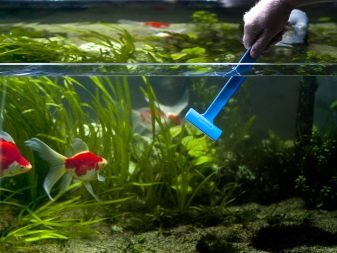
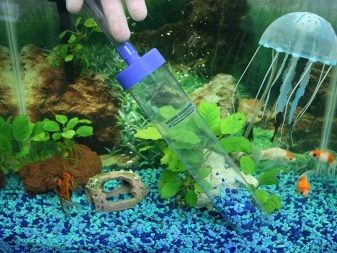
Experts also recommend that after returning the fish to the aquarium for a couple of days, strengthen the compressor. Further, in order to avoid a similar situation, cleaning should be carried out using a metal scraper that does not violate the sealing of the vessel. In addition, at the stage of repair work, in order not to stain the glass of the tank, the space near the seams will need to be closed with a special tape.
In some cases, a damaged aquarium, unfortunately, cannot be restored, so you have to pick up a new tank. In order not to make a mistake with the choice, it is better to choose a structure made of silicate glass, characterized by increased strength, or an acrylic container.
Since some aquariums get cracked due to improper placement, it is important to choose the right pedestal for it. It must be stable, not afraid of moisture, and also have the required dimensions. It is better to give preference to metal models.
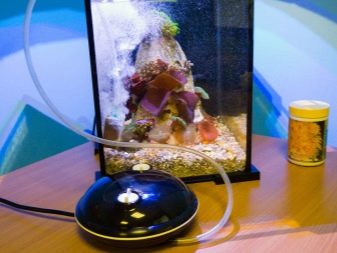
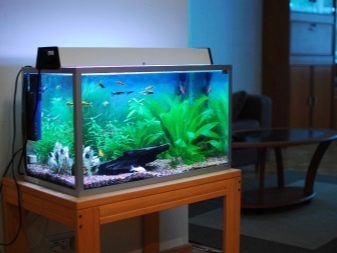
In addition, experts believe that in some situations it’s not worthwhile to start repairs yourself - it is better to immediately seek professional help. It depends on the scale of the problem and on the dimensions of the tank itself, as well as on the size of the leak.
Cheap and small tanks make no sense to repair at all - to get a new vessel is easier and even cheaper. Complicated procedures that require analysis and assembly of the structure, to carry out at home is strongly discouraged, since this process is quite troublesome and requiring filigree work.
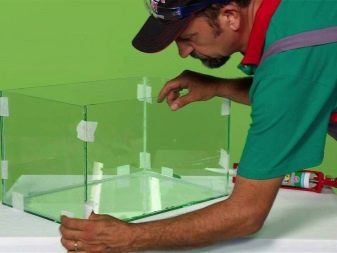
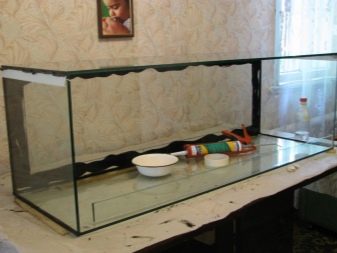
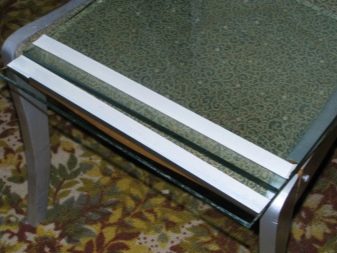
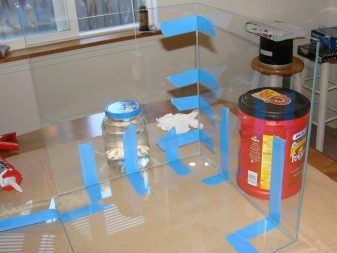
See below for how to properly repair an aquarium.
